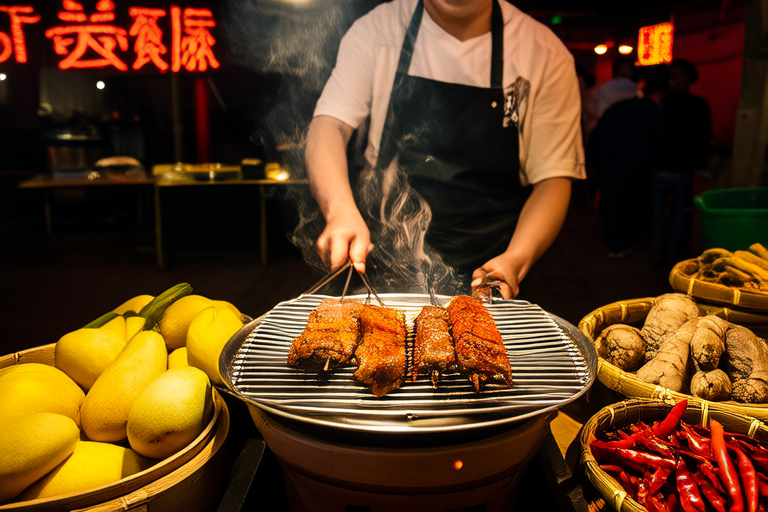Culinary Adventures Beyond the Map

Culinary Adventures Beyond the Map
Food is more than just sustenance; it’s a passport to another world. Culinary adventures offer a unique way to experience and understand different cultures. Venturing off the beaten path to discover authentic flavors allows one to truly immerse themselves in the heart of a place. This article explores lesser-known culinary destinations around the globe, highlighting unique local dishes, hidden eateries, and cultural experiences that go beyond typical tourist spots.
Exploring Hidden Gems
One such destination is the coastal region of Kerala, India. Known for its backwaters and spice plantations, Kerala offers a rich culinary landscape. Must-try dishes include appam, a soft rice pancake served with spicy stew, and puttu, steamed rice flour cylinders paired with banana or coconut. Street food stalls serve up idiyappam, rice noodle cakes, and churuttu, a savory snack made from rice-flour pancakes stuffed with vegetables. Hidden gems like Chettinad cuisine offer a taste of Tamil Nadu’s culinary heritage. Family-run restaurants in small towns serve murukku, crispy fried snacks, and meen moilee, a coconut-based fish curry. In Morocco, the city of Chefchaouen provides an escape from the usual Marrakesh crowds. Here, travelers can savor bissara, a thick fava bean soup, and harira, a hearty tomato and lentil soup, at local markets. For a more refined experience, visit La Maison Arabe, a restaurant that combines traditional Moroccan hospitality with contemporary decor.
Another hidden gem is the island of Sardinia, Italy. This Mediterranean paradise is known for its rugged coastline and historical sites. Sardinian cuisine features pane carasau, a thin, crisp bread, and culurgiones, ravioli-like dumplings filled with potatoes, mint, and pecorino cheese. One must visit Trattoria La Botte in Alghero for authentic Sardinian fare. The Philippines also boasts a diverse culinary scene, with lumpia, spring rolls, and tocino, sweet cured pork, being popular street foods. In the province of Batanes, travelers can enjoy pinagangat, a dish made from freshly caught fish, and pancit batil patung, noodles mixed with vegetables and meat. For those seeking an authentic experience, the Batanes Heritage House offers traditional meals prepared by local families.
Cultural Immersion Through Food
Eating is an essential part of cultural immersion. Shared meals create opportunities for travelers to connect with locals, learn about their customs, and gain insight into their daily lives. In Japan, the tea ceremony is a ritual that showcases the country’s deep respect for nature and simplicity. Participants drink matcha, a powdered green tea, while appreciating the beauty of the surroundings. In Ethiopia, gursha, the act of feeding someone a piece of injera, symbolizes trust and friendship. Travelers can participate in this practice during communal meals. Ingredients and cooking techniques often hold significant cultural value. For example, kimchi, Korea’s fermented vegetable dish, is not only a staple in Korean cuisine but also represents the country’s history of preserving food for long winters.
Anecdotes highlight the power of food in fostering connections. A traveler in Vietnam once shared how joining a cooking class in Hoi An allowed her to bond with her instructor over their shared love for banh xeo, a crispy pancake filled with shrimp, pork, and mung beans. Another recounted meeting his future wife in Peru after they discovered a mutual passion for ceviche, a dish of raw fish marinated in citrus juices. These stories illustrate how food transcends language barriers and creates lasting memories.
Sustainable and Ethical Eating
Sustainable and ethical eating practices are increasingly important in culinary tourism. Supporting local farmers, artisans, and chefs not only promotes environmental sustainability but also contributes positively to the community. In Bali, Indonesia, many restaurants source organic produce from nearby farms. By doing so, they reduce carbon footprints and support small-scale agriculture. Similarly, in Bhutan, the government has implemented policies to promote sustainable tourism, including eco-friendly accommodations and responsible eating practices. Challenges arise when travelers seek to eat sustainably abroad. Language barriers, unfamiliarity with local markets, and varying standards of food safety can make it difficult to ensure ethical consumption. However, resources such as guidebooks and apps dedicated to sustainable travel can assist in making informed choices.
Conclusion
Culinary adventures beyond the map provide a deeper understanding of various cultures and traditions. Embracing these experiences encourages stepping out of one’s comfort zone and exploring new tastes and traditions. Whether it’s discovering hidden gems in Kerala or participating in a tea ceremony in Japan, each meal offers a glimpse into the soul of a place. As we continue to explore the world through food, let us strive to do so responsibly and respectfully. May this article inspire you to plan your next culinary adventure and savor the richness of our planet’s diverse culinary offerings.